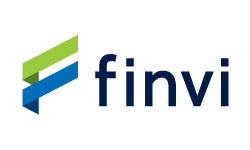Source: site
The student loan crisis gripping Gen Z is no longer a distant warning—it is a seismic shift in consumer credit risk, with profound implications for financial markets and investment strategies. As of 2025, 11.3% of federal student loans are delinquent, a figure that underscores the fragility of a generation already burdened by $39,075 in average federal debt. The resumption of interest accruals, the collapse of income-driven repayment plans, and the looming “One Big Beautiful Bill” have created a perfect storm, forcing Gen Z into a financial crossroads. For investors, this crisis signals both systemic risk and untapped opportunity in the evolving landscape of credit underwriting and alternative assets.
The Credit Risk Reboot: Gen Z’s Financial Fragility
Gen Z’s debt burden is uniquely precarious. With an average monthly payment of $526—double the overall average—many borrowers are prioritizing survival over stability. The end of pandemic-era forbearance and the return of credit reporting for delinquencies have triggered a 175-point average drop in credit scores for prime borrowers, a demographic historically considered low-risk. Southern states, where tuition costs and default rates are highest, are seeing defaults ripple through local economies, exacerbating regional inequality.
The crisis is not just financial but behavioral. Gen Z’s reliance on “Buy Now, Pay Later” (BNPL) services and their unfamiliarity with traditional credit systems have created a generation of borrowers who max out credit limits and default at rates not seen since 2010. The integration of BNPL data into FICO scores in 2025 has further complicated risk models, exposing hidden vulnerabilities. For traditional banks, this means recalibrating underwriting standards and increasing loan-loss provisions. For investors, it signals a need to rethink credit risk frameworks.
Fintech’s AI-Driven Response: A New Era of Credit Underwriting
Amid the chaos, fintechs are emerging as innovators. Companies like Upstart (UPST) and LendingClub (LC) are leveraging AI and alternative data—such as open banking cash flow and behavioral analytics—to underwrite thin-file borrowers with unprecedented precision. These platforms are achieving better risk-adjusted returns than traditional banks, which are struggling to adapt to Gen Z’s non-traditional financial behaviors.
For example, Upstart’s AI models dynamically adjust to macroeconomic shifts and individual borrower behavior, enabling more accurate credit assessments. Similarly, LendingClub’s use of open banking data allows it to evaluate repayment capacity beyond static credit scores. These innovations are not just mitigating risk—they are creating new markets for credit products tailored to Gen Z’s needs.
Investment Opportunities: Where to Allocate Capital
The Gen Z debt crisis is catalyzing a shift in investment priorities. Here are three key areas to consider:
- AI-Driven Fintechs: Firms like Upstart and LendingClub are leading the charge in redefining credit underwriting. Their ability to integrate alternative data and adapt to Gen Z’s financial habits positions them as high-growth opportunities. However, investors must monitor regulatory risks, such as BNPL licensing requirements in states like New York.
- Embedded Finance Platforms: Startups like Froda and Wayflyer are embedding financial services into non-traditional platforms (e.g., social media, e-commerce), offering Gen Z tailored lending and payment solutions. These platforms use real-time data to adjust terms dynamically, reducing default risk while maintaining accessibility.
- Blockchain and Alternative Lenders: Blockchain-based platforms like Ripple and Chainalysis are emerging as infrastructure players, enabling transparent tracking of hidden debts and ensuring compliance with evolving credit regulations. These technologies could stabilize credit portfolios and enhance trust in lending ecosystems.
The Road Ahead: Balancing Risk and Resilience
While the Gen Z debt crisis presents systemic risks, it also offers a blueprint for innovation. Traditional banks, with their robust capital buffers, remain resilient but face challenges in adapting to Gen Z’s digital-first expectations. Fintechs, on the other hand, are agile but must navigate regulatory scrutiny and margin compression.
For investors, a balanced approach is key. Diversifying across traditional banks (e.g., JPMorgan Chase, Bank of America) and fintechs with strong AI integration can hedge against volatility. Additionally, alternative assets like blockchain-based lending platforms offer long-term growth potential as the financial system evolves.
Conclusion: A Generation’s Crisis, A Sector’s Opportunity
The Gen Z student loan crisis is more than a financial issue—it is a generational reckoning. As defaults reshape credit risk models and force a reevaluation of financial stability, investors who act decisively will find fertile ground in AI-driven fintechs and alternative assets. The future of credit lies in adaptability, and those who embrace this shift will not only mitigate risk but also capitalize on the next wave of financial innovation.




